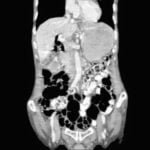Be aware of Fake eggs in the market.
Contributed by
Dr Muhammad Yaseen MD(Medicine)
Senior consultant Medicine .
Formerly Prof Dept of Medicine GMC Srinagar Kashmir
In some markets, reports have emerged of fake eggs being sold. Here’s why it’s important to be aware of this issue and how to identify fake eggs.
How are Plastic/Fake Eggs Made
The egg yolk and egg whites are being created by using sodium alginate which contains ingredients like gelatine, calcium and more. Water and food color is then added to give it a natural look to look like a real egg.
The sodium alginate is added in luke-warm water with food color to match an egg. Then it is showered with gelatine and benzoic acid with other chemicals to prepare the egg whites.
For the yolk, they simply use the pre-made formula of the sodium alginate and add yellow color to it. Both parts are brought using calcium chloride and sharped in the form of an oval (egg).

What happens if you eat fake egg?
The chemicals used for artificial eggs causes metabolic disorders, brain damage, liver disease, cancer and many other diseases. So the productions of fake eggs haven’t any health benefit rather it’s a chemical hazard. Generally the artificial creation of natural things doesn’t bless humans.
One of the most obvious difference in between white and desi eggs is the colour. Desi eggs are off-whitish or a light brown in colour and white eggs are well, white. But desi eggs are propagated to be healthier than white eggs, they are also more expensive than their white variety.
The chemicals used for artificial eggs causes metabolic disorders, brain damage, liver disease, cancer and many other diseases. So the productions of fake eggs haven’t any health benefit rather it’s a chemical hazard. Generally the artificial creation of natural things doesn’t bless humans.
One of the most obvious difference in between white and desi eggs is the colour. Desi eggs are off-whitish or a light brown in colour and white eggs are well, white. But desi eggs are propagated to be healthier than white eggs, they are also more expensive than their white variety.
Are artificial eggs healthy?
The chemical constituents of fake egg are not beneficial to the human health. Artificial egg has little or no nutrition value compare with the real eg
How to Identify Plastic Eggs
There are 6 signs that can help you identify the difference between plastic and real eggs.
1. Outer Shell Density
Fake plastic eggs have harder shells as compared to natural eggs and is roughl. You will be able to tell the density of the shell by closely observing it. Moreover, inside the shell you’ll c a rubber-like coating.
2. Outer Shell Shine
Unlike plastic eggs, natural chicken eggs are not very shiny. The plastic eggs, on the other hand, will be reflecting light from the surface.
3. Fake Yolk Melts
As soon as you crack a natural egg, the yolk does not spread until you apply force or break the yolk yourself. With plastic eggs, as soon as you break the shell the yolk will get mixed with the egg whites.
4. Noises
When a natural egg is shaken, the egg does not make noises. However, when a plastic egg is shaken, a sound can be heard from within.(like that of gande thool… Rotten egg)
5. Burn the Shell
When the plastic egg’s shell is burnt, it starts turning black and smelling like burnt plastic.
6. Water Test
After boiling eggs, put them in water. If the egg sinks, the egg is natural but if it floats, it’s not a real egg.
Also, fake eggs can stay outside for a few days without going bad whereas natural eggs will go rotten if kept outside.
Join the mailing list!
Get the latest articles delivered right to your inbox!




